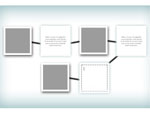Joe Jelen on Pocket Camcorders
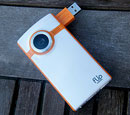
A pocket camcorder shrinks the technology of a video camera to the size of your pocket. While not the highest-quality recording device, pocket camcorders offer an easy way to point and shoot video. Although camcorders have been used in classrooms since the 1980s, greater availability of pocket camcorders has revolutionized the way we think about using video in the classroom. Before, a teacher was lucky to check out one camera for use in his classroom. Today, with pocket cameras costing around $150, schools can afford to have multiple camcorders in teachers’ hands. In addition, the pocket camera affords increased flexibility in storage and editing over its predecessors.
Pocket camcorders are relatively inexpensive with continually falling prices. Most pocket camcorder models cost between $150-$250. The difference in price is largely dependant upon the quality of video it produces and its memory capacity. When searching for a pocket camcorder, you should consider what it will be used for in the classroom. For most projects high definition video and zoom capabilities are valuable, but not a requirement. However, battery life and ease of uploading should be considered. Controls for recording and playing back video should be easily found on the unit. Many media centers have invested in these devices, but if yours has not and you would like to have a few cameras in your own classroom, funding need not hold you back. Currently, there is a 2-for-1 deal on Flip brand video cameras at the nonprofit DigitalWish.com. Also, you can look into buying refurbished pocket camcorders online for around $75.
Increasingly we see smartphones with video capabilities in students’ hands. This will likely make the pocket camcorder technology short-lived. But for now the pocket camcorder offers all students a chance to learn by creating video. I feel there is no need to worry as the same teaching techniques can be applied with the new smartphones as these devices become widespread.
To use a pocket camcorder, you will either need a computer on which to upload the stored video (most often via USB) for editing and sharing, or a way to project video from the pocket camcorder to a television or LCD projector (usually via HDMI cable). Once you figure out the logistics of students presenting or sharing their videos, you’ll need a reason to have students use the cameras! I believe the pocket camera’s true benefit is providing students authentic learning and assessment opportunities. The new National Curriculum Standards for Social Studies put out by the National Council for the Social Studies includes a number of products that could be created with a pocket camera. Students could take pocket cameras home to conduct interviews of those that have witnessed historical events. Or, they could create a public service announcement publicizing healthy habits. Students could also use their cameras to capture visual evidence of culture in their community or create a documentary on a community issue. I have also seen teachers assign students the task of recording and narrating trips to historical sites to share with classmates. I had students create CommonCraft-like videos in which they explained a constitutional amendment “in plain English.” In this project students created a script and a storyboard, and used black-and-white cutouts to help explain their assigned amendment. If rehearsed properly students could shoot their two-minute video in one take and did not need to spend time editing. Aside from a pocket cam, the only other additional piece of equipment necessary is a tripod that will allow the camera to face downward to record action beneath.
The social studies classroom offers many avenues to incorporate the pocket camera into instruction and assessment. I hope that you experiment with other uses for the pocket camera and share them with us here.
Find product reviews for pocket cameras.
In an earlier blog entry, Jennifer Orr describes using pocket camcorders with her 1st-grade students.
Watch students make movies in our video on the Prince William County, VA program 'Of the Student, For the Student, By the Student.' Students could use pocket camcorders to make their own videos at historic sites.
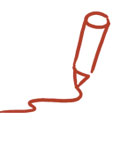
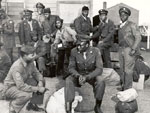
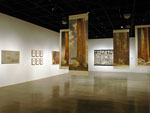
 My students get excited anytime I mention the words “field trip,” and with good reason. Field trips not only offer students a get-out-of-school-free card, but also offer them a chance to learn through interacting and experiencing. When money and time are tight, field trips are cut. That is why I am thrilled that technology is allowing students to take
My students get excited anytime I mention the words “field trip,” and with good reason. Field trips not only offer students a get-out-of-school-free card, but also offer them a chance to learn through interacting and experiencing. When money and time are tight, field trips are cut. That is why I am thrilled that technology is allowing students to take  Another instructional idea that blends history with understanding art is to select a group of romantic paintings, a group of realist paintings, and a group of impressionist paintings and discuss the different styles of paintings and the emotions each elicits. For example, many romantic paintings glorify subjects and can stir feelings of nationalism, while realist paintings can capture the daily hardship and struggles individuals must endure. Teachers can discuss with students how different styles of paintings capture prevalent ideas and emotions of the artists’ societies.
Another instructional idea that blends history with understanding art is to select a group of romantic paintings, a group of realist paintings, and a group of impressionist paintings and discuss the different styles of paintings and the emotions each elicits. For example, many romantic paintings glorify subjects and can stir feelings of nationalism, while realist paintings can capture the daily hardship and struggles individuals must endure. Teachers can discuss with students how different styles of paintings capture prevalent ideas and emotions of the artists’ societies. 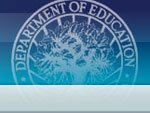
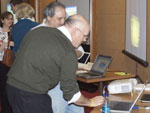









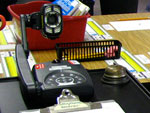
 Some document cameras come with a freeze image button which is a great feature to capture a page in a book or map that might be difficult to hold in place. If the document camera does not have this feature, you can hook up the document camera directly to the video projector, which often has the ability to freeze an image. If your document camera is not one that hooks up to your computer via USB, you can also set up the document camera directly to your projector. This allows you to toggle between the image on your computer screen (assuming it too is attached to your video projector) and the image from your document camera. You can also connect most document cameras to a television using an S-video cable or component video cable. It should be noted, however, that the clarity is not as crisp when using the S-video cable or component video cable compared to using a VGA or DVI connection.
Some document cameras come with a freeze image button which is a great feature to capture a page in a book or map that might be difficult to hold in place. If the document camera does not have this feature, you can hook up the document camera directly to the video projector, which often has the ability to freeze an image. If your document camera is not one that hooks up to your computer via USB, you can also set up the document camera directly to your projector. This allows you to toggle between the image on your computer screen (assuming it too is attached to your video projector) and the image from your document camera. You can also connect most document cameras to a television using an S-video cable or component video cable. It should be noted, however, that the clarity is not as crisp when using the S-video cable or component video cable compared to using a VGA or DVI connection. 